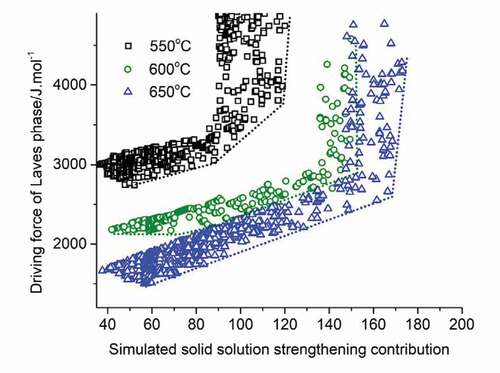Figures & data

Table 1. Search range (in wt.%) for alloying elements and the homogenisation temperatures (in 0C).
Table 2. Room temperature strengthening coefficient for alloying elements dissolved in ferrite (MPa per at. %) [Citation34,Citation35].
Figure 1. Experimentally observed incubation times for Laves phase precipitation at several temperatures as reported for nine commercial steels [Citation39–Citation42].
![Figure 1. Experimentally observed incubation times for Laves phase precipitation at several temperatures as reported for nine commercial steels [Citation39–Citation42].](/cms/asset/3f86c170-ea2e-4246-b1ac-4829a02993a8/tsta_a_1814679_f0001_oc.jpg)
Figure 2. The composition distribution of all potentially feasible compositions normalized to the total composition search range in . The density of column patterns represents the number of solutions meeting the criteria.
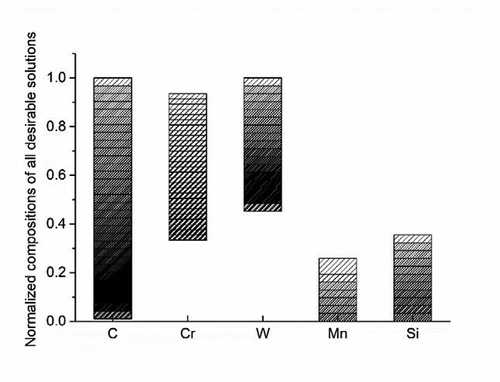
Figure 3. PH factor of M23C6 carbides after 105s at 550°C versus SSS factor of those solutions meeting all go/no-go criteria. The values of existing commercial steels, indicated by star symbols, are also put on the plot to compare to the identified possible solutions to the current state of the art steels.
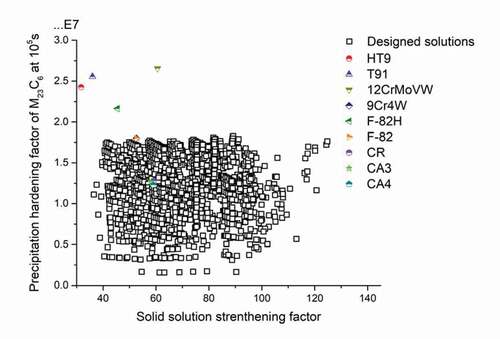
Figure 4. PH factors of M23C6 precipitates as strengthening particles at 105s (a) and the SSS factors (b) versus driving force of Laves phase as self-healing agents meeting all go/no-go criteria at a temperature of 550°C.
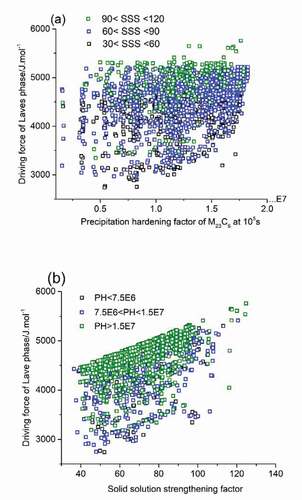
Table 3. Compositions of three selected alloys (in wt.%) and their PH factor, SSS factor driving force for Laves phase formation and estimated healing initiation times at 550°C.
Figure 5. PH factors of M23C6 precipitates as strengthening particles at 105s versus driving force of Laves phase as self-healing agents meeting all go/no-go criteria at the temperature of 600°C (a) and 650°C (b).
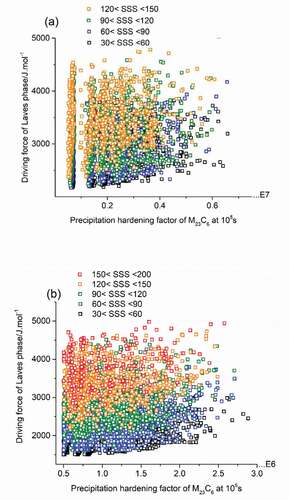
Figure 6. Properties values for SSS factor and Laves phase driving force on the Pareto front at different temperatures.
